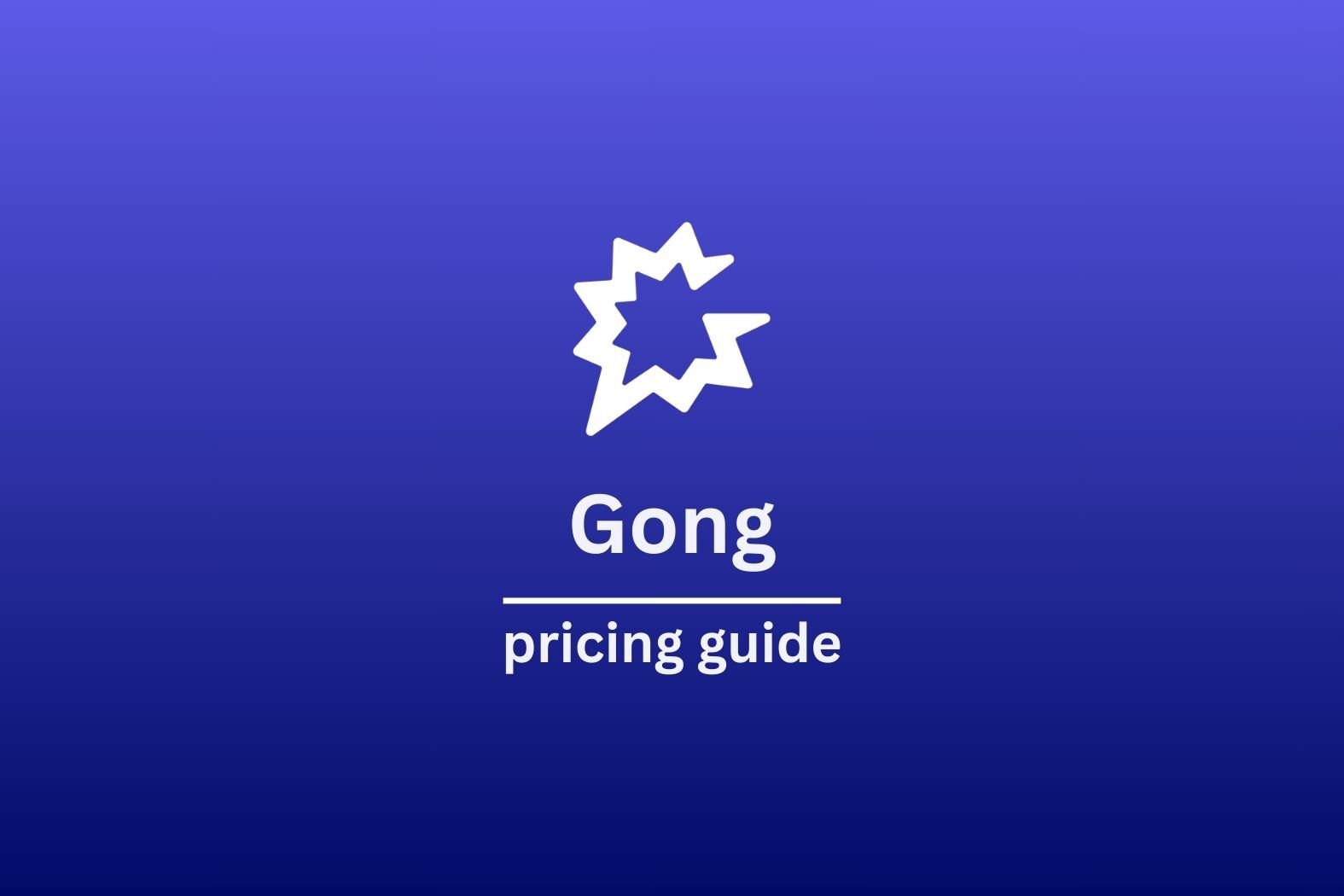We’re not sure if you’ve noticed, but we are pretty darn obsessive about our users here at tl;dv.
From how we develop new features for our product, to how we speak about user centricity, to us user research, and understanding our users is quite literally part of our company’s DNA.
So it’s no surprise that we think user research matters – like, REALLY MATTERS.
Think about it. What are your favorite products? What do they do? Do they solve a problem you have? Do they make you feel a certain way? If the answer to these is positive, there’s a good chance it is no accident. User research would have led to that exact thing.
In fact, there are some very talented User Researchers out there…
Why Does UX Research Matter?
Just to get this really crystal clear. UX research is not a luxury but a necessity.
If you don’t put the needs of your users first, you will create a product that people may not like. Why do that? Why not spend the time and get it right? It will then create SUCCESS.
So how do you do this? Well, you need to speak to your customers. User research is a way to create empathy, organization-wise, for the customer. If every person in every department thinks about the user, then less bias and prejudice can come in. People KNOW what the desired outcome is.
It just makes life EASIER!
And in this day and age, with the absolute leaps and bounds that AI is making, it’s never been easier to initiate. In fact, AI has only enhanced user research, specifically Chat and UX research tools that maximize the GPT-3 engine.
Ultimately, UX research is understanding user behavior, needs, and attitudes to create better experiences.
It’s a crucial step in designing products people want to use and ones they will buy and preach far and wide about.

UX research helps teams understand their users' needs and preferences
This is one area in that AirBnB really excels. They have implemented an ongoing user research roadmap that looks at all facets of the customer experience, whether the hosts or the end users.
UX research helps identify pain points in the user experience

The Nielsen Norman Group are often drafted to help identify pain points and has identified three levels through their ongoing research. However, the key importance of user research is creating products to solve problems. It’s an essential part of the development process because it provides teams with the data they need to create the right solutions. If there is no problem, there is no need for a solution, so what’s the point of a product!?
UX research can help identify and prioritize features that users want
This can be done by obtaining user feedback and observing behaviors and usage patterns. This was highlighted with the video conferencing platform Zoom (which also works well with tl;dv!). When the platform was first launched it was designed for business meetings and webinars. Zoom found that using user research, users were using the platform for personal communication and social events.
To capitalize on this usage pattern, Zoom began prioritizing important features for personal communication, such as virtual backgrounds, filters, and emojis. These features were added based on direct feedback from users and observations of their behavior.
UX research can help identify new market opportunities and ensure that no losses are being made
One great example of this in action is Slack. Slack conducted UX research and found that users, even those using the tool for years, were unaware of powerful search functionality. By discovering this and looping in their users on the design, they were able to really highlight and make their tool even more user-friendly.
User research helps companies to make data-driven decisions based on user feedback
One way that users’ voices can be amplified and help makes those all-important decisions is by using a tool such as tl;dv to record the user feedback in real-time. By having the data, in the users’ own words, teams can make informed decisions and iterations to your product quickly and effectively with context to back up to stakeholders and senior management. Also, by implementing tl;dv, you can build up an incredibly diverse user research repository of customer voices, across all stages, for easy access.
UX research can help teams identify and address cultural differences that affect the user experience

This is key, and to do it wrong can be catastrophic. Equally, even the “big guns” don’t get this right. Amazon once made a snafu when trying to launch in India back in 2018. The typical “spyglass” icon had no cultural context in India, and users assumed it was a ping pong paddle. While they didn’t swap it out completely, following some user research they added a search label that showed that it was a search box with a Hindi label.
UX research can help product teams create more inclusive and diverse products
Microsoft is a big champion of this and has literature explaining why inclusivity is vital. This approach has led to developments such as the Xbox Adaptive Controller, which people with disabilities can use to play their favorite games.
UX research helps teams to understand the emotional and psychological factors that influence user behavior
These factors go beyond functional aspects, including emotions, perception, and cognitive biases. For example, UX research can help teams design experiences that reduce negative emotions and increase positive ones, improve brand perception, and address users’ cognitive biases by using familiar design patterns or reducing perceived risk through clear communication of product features and benefits.
Overall, UX research can lead to more effective and satisfying user experiences by designing products that better meet the needs and preferences of their target users.
UX research helps businesses develop a deeper understanding of user motivations and decision-making processes
Understanding why people buy or use products can help businesses make better products that people actually want. And adopting a customer-centric approach rather than a product-centric approach makes a business “better.” It’s like knowing what people like to eat before you cook dinner – you’ll make something they enjoy. This can make customers more loyal and even increase sales. Steve Jobs, the co-founder of Apple, knew this.
You've got to start with the customer experience and work back toward the technology, not the other way around.
Steve Jobs, co-founder of Apple Tweet
UX research is how businesses can determine what people want and create products that meet those needs.
UX research can help improve product usability and ease of use

Knowing about usage patterns and individuals’ behavior, businesses can develop products that are intuitive and require minimal effort to use. This leads to happier users who are more satisfied with the product and more likely to purchase it again or become an advocate for your brand.
Good UX research can improve customer satisfaction and loyalty
With a firm grasp of user behavior and expectations, businesses can create products tailored to their customers’ needs. This helps drive customer satisfaction by ensuring that the product meets customer needs. Increased customer satisfaction can lead to brand loyalty and more repeat customers. According to econsultancy, 88% of companies found that customer mapping improved their ability to deliver a customized experience.
UX research can help increase conversion rates
A solid basis of ongoing UX research means that businesses can optimize their products to remove any obstacles that may prevent customers from completing a purchase. This could include streamlining the checkout process on an app, providing clear product descriptions, and highlighting product features that customers care about.
Leveraging UX research improves the overall user experience
All businesses want to create products that solve customer problems and meet their needs. If a company consistently listens to the pains of its customers and implements those changes carefully, customers feel listened to. This boosts customer loyalty and leads to more satisfied customers. From initial engagement with a potential customer, to after-care and support, using data-driven insight based on facts improves the overall user experience.
UX research can help reduce support costs by identifying and addressing common user issues

Refunds can be a pain, and losing customers when things are not quite right can be costly to a business. UX research can help identify and address common user issues before they arise, reducing the need for customer support and providing customers with a better experience overall.
UX research can help you design products that are more intuitive and easy to learn
Developing products that are easy to learn and understand can help reduce cognitive load. This helps customers get up to speed faster and engages them more with the product. This can help businesses get customers to their desired outcomes faster, resulting in better user experiences and higher retention rates.
UX research can help you create products that are more engaging and fun to use

Things like gamification and augmented reality are becoming increasingly popular in the digital world of Product. And if a company seeks out the wishes of its customers, finding out what makes them tick and how they can improve their experiences, businesses can create more engaging and fun products. And to be honest, even the most boring products, if they are just a little bit more exciting, will generate way more loyalty.
UX research can help reduce development costs by identifying problems early in the design process
By understanding user behavior, businesses can identify potential problems early in the design process and develop solutions. This helps reduce development costs by quickly finding and addressing issues before they become costly to fix.
UX research can help reduce the risk of product failure
Nobody wants to fail. But sadly, some products DO fail (cough, New Coke, cough). You can safeguard against this by putting in the work at the beginning of the process and doing UX research. While you’ll never quite know what will work correctly utilizing things like The Mom Test, you stand a better chance than building products without insights.
It can help you prioritize features and product improvements
With a strong understanding of user needs and listening to them on an ongoing basis, businesses can identify the features and improvements that matter most to customers. This helps prioritize development efforts, ensuring that the resources go into projects that bring the best return on retention, advocacy, and general happiness. Equally, it shows when things need to pivot or maybe stop altogether.
UX research can help you validate design decisions and prioritize features based on user feedback

Everybody on the team LOVES the blue, but your customers will hate it. The only way to honestly know is to get out, ask them and listen. This helps validate design decisions and prioritize features customers care about the most. This ensures that the product design meets customer needs and leads to happier customers, which can lead to more sales.
It helps you optimize the performance of your website or app through usability testing
As a methodology, usability testing provides invaluable insights into how customers interact with your website, app, or other product. It can help identify areas that need improvement and inform other design decisions. Things logical to you as a researcher, designer, or a product team member may not feel natural to someone externally.
UX research can help you create more effective marketing messages and campaigns
Having a solid idea of what influences your customers’ decisions means that, as a business, your marketing team can deliver its message to the right people at the right time. This means you are not spending wads of cash on a billboard on the freeway when your customers are all remote workers in Bali.
It can help improve brand perception and reputation

How many people do you tell if you’ve had a good experience? How many people do you tell if you’ve had a BAD experience? A lot more, we guess. And in an age where one disgruntled customer can let rip on social media, it’s essential to keep pleasing your customers to keep your brand’s reputation up. While equally, you will never please all the people all of the time, UX research can help you understand what’s important to your customers and how to ensure they have the best experience possible.
It helps you understand how users perceive your brand and products relative to competitors
@tldv.io Don’t worry it was insured. #userresearch #tech #startup #ceo #uxdesign #uxresearch
♬ original sound - tldv.io - AI Meeting Recorder
The ultimate test of success is how customers view your product or service relative to their competitors. Doing UX research can provide insights into what makes your product better, as good as, or worse, than your competition.
Equally, if a competitor launches a feature and the CEO suddenly wants to add that to the roadmap, having a solid basis of UX research to draw from can either confirm and justify the energy and resources or save you a lot of wasted effort and give you the justification to say “It’s not a good idea.”
UX research can help you optimize your pricing and packaging strategy
What is the right price point? Regarding pricing, UX research can help you determine what customers are willing to pay and how they perceive value. While it could be tempting to undercut the competition, this could be a short-term gain and a long-term loss. Equally, if you are launching new products or features, understanding the customer needs is important to price and package these appropriately.
UX research can help you design products that meet regulatory and legal requirements
We all want to create products that our customers love, but equally, it’s crucial to ensure that these products meet regulatory and legal requirements. Many products involve consumer data, and it’s essential to ensure that these are used responsibly and that you are protecting your customers’ trust.
UX research can help you address ethical concerns related to your product
In today’s world, ethical concerns are increasingly important. Is your product socially responsible? Does it use energy responsibly? UX research can help you find out what your customers think and provide valuable data that can help inform decisions related to ethical concerns.
UX research can help you design products that are more sustainable and eco-friendly
Being able to design products that are more sustainable and eco-friendly is becoming increasingly important. By understanding user needs, behaviors, and preferences, you can design products that are energy efficient, use fewer materials, and reduce waste.
Understanding your customers’ attitudes toward sustainable practices will help you create more responsible products.
It helps you create products that align with your company's values and mission
So many businesses and products struggle because they aren’t really sure about “what” or “who” they are. If you take a customer-centric approach, this will help you to find what the values of your potential customers are. Do they match up with yours? Are there any trends or similarities? Having a solid handle on what your company is all about and your customers will help you design products and create experiences that will generate long-term loyalty and passionate advocates.
UX Research stops you from making assumptions about your customers

In a series of shocking statistics, a report by Acquia found that nearly 50% of consumers feel that brands fail to meet their expectations. Also, two-thirds of customers couldn’t remember when a brand exceeded their expectations. In the same study, almost 90% of marketers thought they were delivering a fantastic experience. This isn’t an isolated study, either. Across the business world, there is often a massive disconnect between customer experience and internal assumptions. While many companies start off strong with UX research, they can often become complacent, leading to failure.
One enormous example of this was Blockbuster.

Did you know that Blockbuster had the opportunity to buy Netflix at one point? They assumed that people would continue to consume films as they always had done. That streaming was an absurdity. They failed to listen to their customers and make the right decision. The result? Well, Netflix is now worth almost $150 billion, and Blockbuster is now a distant memory.
So UX Research Really Does Matter
Yes, it does.
UX research should always be your starting point and your North Star when it comes to everything from product design to pricing and business decisions. By keeping the customer at the forefront of everybody’s mind (and we mean everybody!), you lessen the risk of jumping to conclusions and alienating your customers.
Armed with customer insights and feedback, you can make informed decisions to help your business succeed in the long term.
So what are you waiting for? Get out there and start talking to your customers; use tools such as tl;dv to record those all-important interactions and start building better products.





